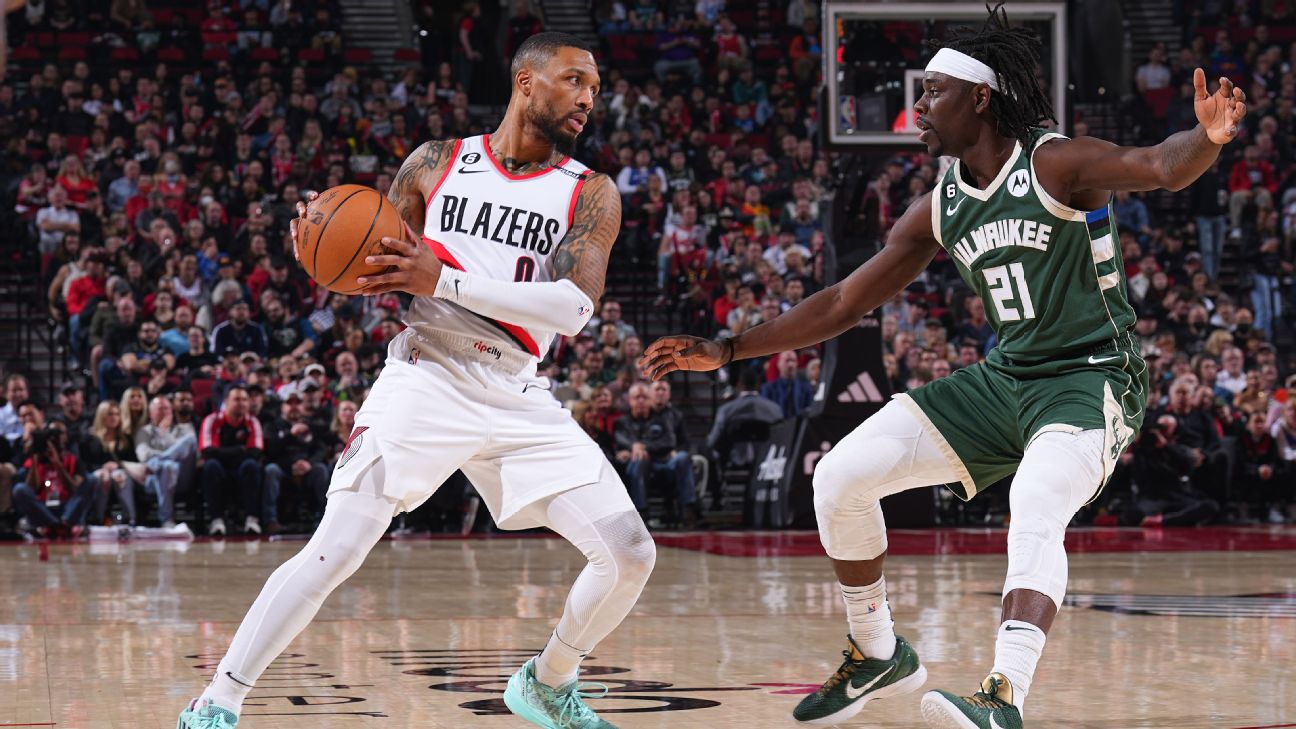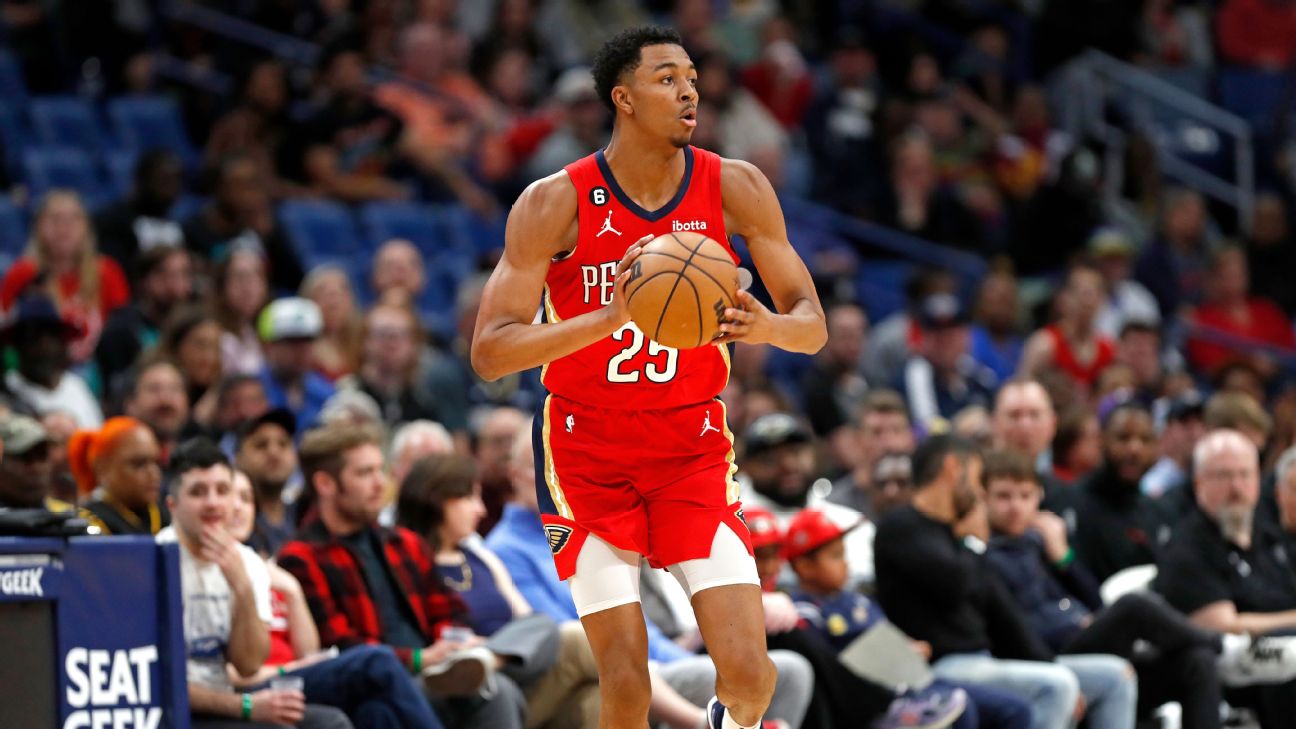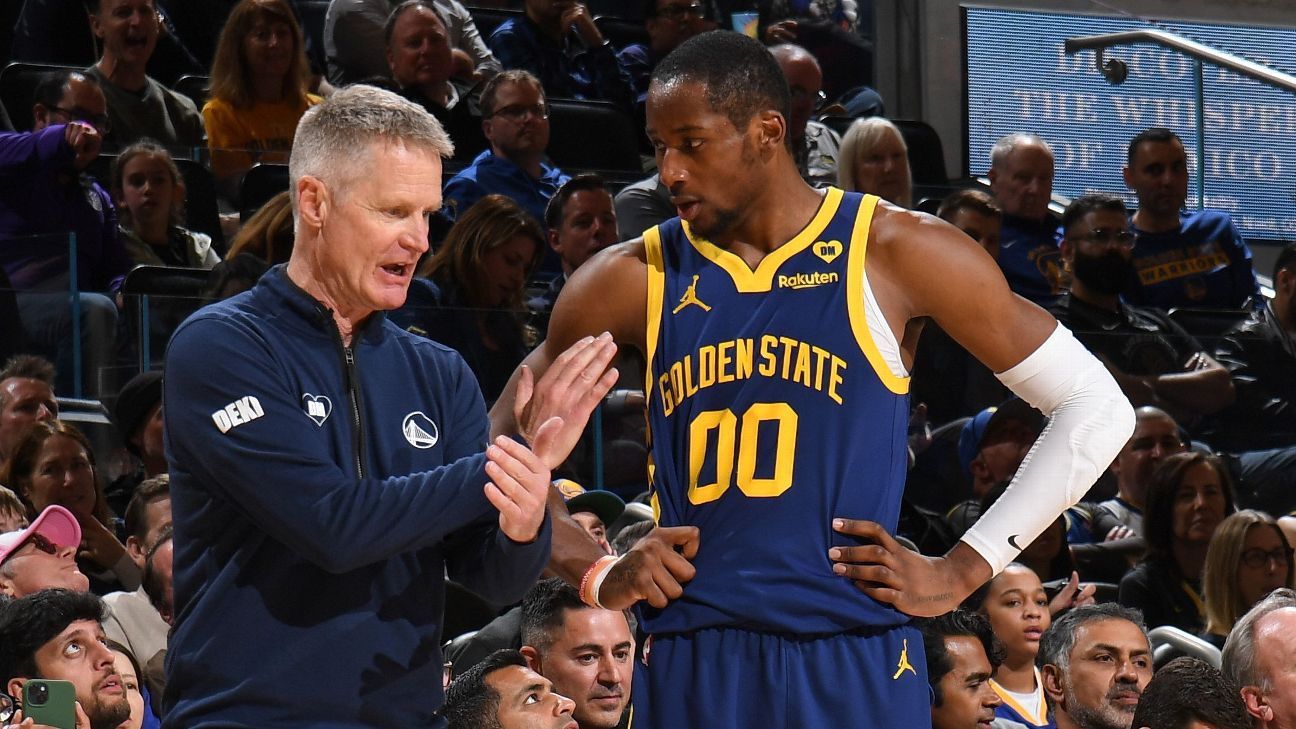Milwaukee Bucks general manager Jon Horst steered his wife and two children on the drive home from a family wedding in northern Wisconsin on Sunday, a three-hour ride amid the surround sound of a transcendent trade. Mia slept, the kids immersed themselves in tablets and a long call with Portland Trail Blazers GM Joe Cronin delivered Horst what he had been hoping to hear: A growing conviction that the Blazers’ best deal for Damian Lillard belonged with the Bucks.
Horst dropped his family at home around 8 p.m. and drove directly to his office at the team’s practice facility. He called a couple of his key front office deputies and asked them to meet him there. As the opening of training camp loomed, and two-time MVP Giannis Antetokounmpo’s future teetered, Horst and his staff would work through the next 2½ days to close out one of the biggest trades in a Bucks history that includes the arrival and departure of Oscar Robertson and Kareem Abdul-Jabbar.
After Cronin hung up with Horst on Sunday night, he called the Blazers’ governor, Jody Allen. For the first time since Lillard made a formal trade demand on July 1, Cronin had a sense of a breakthrough, he told her. There’s a trade to do — and it’s with the Milwaukee Bucks and Phoenix Suns.
Interviews with officials with direct knowledge of the negotiations described a clandestine, chaotic final few days on the NBA offseason’s biggest trade.
Soon after ending his call with Allen, Cronin opened up his Moleskine journal and jotted notes with his blue marker. For months, in this fist-sized notebook jammed with the secrets of the summer, it had been a blue marker for Lillard trade talks. Four pages for every opposing team — weeks and weeks of trade conversation notes, deal structures and ideas. Cronin resisted posting trade offers on elaborate whiteboards with magnets and nameplates in his practice-facility office or meeting rooms; too many prying eyes could steal a glance. Everything existed inside that Moleskine and his MacBook.
One of the most delicate parts of these superstar trade sagas resides in teams’ needs to protect players under discussion, sparing feelings and preventing punctured locker rooms by keeping starry names out of the public news cycle. Cronin had to contend with a player agent who wanted to squash any deal that didn’t include Lillard landing with the Miami Heat, and Horst wanted to protect the sanctity of his championship core.
As much as Antetokounmpo’s franchise future ruled his pursuit of Lillard, Horst kept his two-time league Most Valuable Player out of the loop in trade conversations. To Horst, the Bucks owed Antetokounmpo the peace of mind to never have to sign off on Jrue Holiday’s departure.
In many instances, organizations in similar straits not only make their star players accomplices in the trade process, they also use the circumstance to package the green light on a blockbuster deal with a promise to stay on a long-term contract. For Horst, this had to be an executive decision. He had to lean on his belief that acquiring Lillard extended the Bucks’ championship window and ticked up its percentages to keep Antetokounmpo.
From the earliest days of July, Horst told Cronin their periodic conversations on Lillard had to stay secret — or the Bucks would bail. Horst didn’t want Holiday to become leverage for the Blazers in trade talks on Lillard elsewhere, which precluded Portland’s ability to shop the possibility of Holiday’s availability to those teams where he fit. Acquiring and keeping a 33-year-old Holiday, who has a year left on his contract, makes no sense for the Blazers. The Blazers are reshaping the roster around the No. 3 overall pick, 19-year-old Scoot Henderson, and Holiday’s value resides with teams on more immediate timelines to compete for championships and pursue postseason play.
That’s why Horst told Cronin that the only way a deal could happen would come with Portland canvassing the league and ultimately circling back to negotiate one-on-one with Milwaukee. That started on Sunday night. The Bucks’ assets to make a trade work were easily discernible — the 2029 first-round pick, 2028 and 2030 pick swaps and, yes, the two-time All-Star guard, Holiday.
Lillard, 33, wanted a trade and delivered the Blazers a singular destination: the Miami Heat. In recent years, there have been several stars able to create the leverage to force deals to destinations of their choosing. Paul George to the Los Angeles Clippers, Anthony Davis to the Los Angeles Lakers, James Harden to the Brooklyn Nets, Kevin Durant and Bradley Beal to the Suns. In the era of player empowerment, Lillard ran into complications with a $60 million yearly salary looming at 35 and 36 years old — and no veto power on trades in his contract. Whatever his public and private posture, Lillard’s power was limited. Cronin talked to his staff about controlling the tempo of the talks, slowing the process and using July and August to explore the marketplace. He studied the trade models of Brooklyn’s Sean Marks with Durant, and Philadelphia’s Daryl Morey with Ben Simmons. In those acrimonious showdowns, patience had been the pathway to incrementally increasing offers.
Cronin’s peers, who had been in these circumstances, privately told him what he had publicly declared: His obligation was to find the best deal for the Blazers, not for Lillard. If those conflicting elements matched up, even better for everyone.
Through it all, Cronin told himself: Eliminate the emotion, the frustration, the fatigue. And most of all, Cronin implored himself: Don’t settle. Don’t let yourself settle.
Richard Jefferson says the Bucks have become his ‘”way-too-early favorite” with the addition of Damian Lillard.
Big trades are like puzzles — a jumbled slab of salary matches, collective bargaining rules, positions and ages and gamesmanship. What Cronin had going for him had been the outline of a secondary deal with the Suns for center Deandre Ayton; a side negotiation that Cronin kept connecting to his larger talks on Lillard. Before Lillard ever asked out, Portland had discussed ways to acquire Ayton, and so the Suns made a natural trade partner as a third team.
Ayton for Jusuf Nurkic — it was a way for the Blazers to get a 25-year-old starting center, and the Suns a starter at half the salary who’d bring with him some role players.
To this end, the Suns could never know the third team in the trade. Cronin kept Suns CEO Josh Bartelstein on the line for months and weeks and days, and finally, hours on Tuesday and Wednesday. Bartelstein, general manager James Jones and owner Mat Ishbia could go days without hearing from Portland, but Cronin would always circle back and keep them abreast.
When Cronin and Horst went to sleep on Tuesday night, they were confident that they had a trade to complete on Wednesday. The Blazers and Bucks just needed to close out terms with the Suns, and they had a deal.
Here’s what made that delicate, though: If the deal fell apart, Horst didn’t want another team to know how far along these Blazers-Bucks talks had gotten. The Suns knew they were getting Portland’s Nurkic, Nassir Little and Keon Johnson in a three-team trade, but the Suns had to get one more asset to make this deal workable. In almost all cases, Cronin would’ve told Bartelstein that he was getting Milwaukee guard Grayson Allen, but Horst’s insistences on secrecy made this different.
Cronin did tell Bartelstein the general salary and position of the mystery player, so the Suns were able to deduce that it was one of two players — Allen and Oklahoma City’s Victor Oladipo, who is recovering from a serious leg injury. The Thunder are sometimes on the periphery of these big deals, so the Suns thought that was a possibility. Of course, the Thunder were nowhere near this trade.
Cronin kept telling Bartelstein: Just trust me. You’re going to like the mystery player. Trust me.
Around 2:15 p.m. ET on Wednesday, Cronin confirmed Bartelstein’s suspicions and told him that, yes, they were getting Allen in the trade. After the Suns confirmed it was Allen, Bartelstein, Jones and Ishbia briefly huddled and returned a resounding yes to Cronin. Done, Bartelstein told him. And that was that. The three teams agreed on the trade, and immediately started calling the players and agents involved to inform them of the blockbuster.
There was a spontaneous mixture of celebration and relief in the Blazers’ conference room. Portland hadn’t delivered the greatest player in franchise history to Miami, but they did give Lillard a co-starring role with Antetokounmpo that instantaneously made Milwaukee a championship favorite. They believed they had done right by Lillard, and had nothing for which to apologize. As the news broke, Cronin could see his phone pulsating with calls. All the Lillard teams — and numerous more now — had become Holiday teams.
-
Do you have another deal for him? (No)
-
Can we get involved with him? (Yes)
Suddenly, there was another trade to start on. Joe Cronin grabbed his Moleskine journal, opened up the pages and traded out the Damian Lillard blue marker to start scribbling notes in a green marker for Jrue Holiday.



